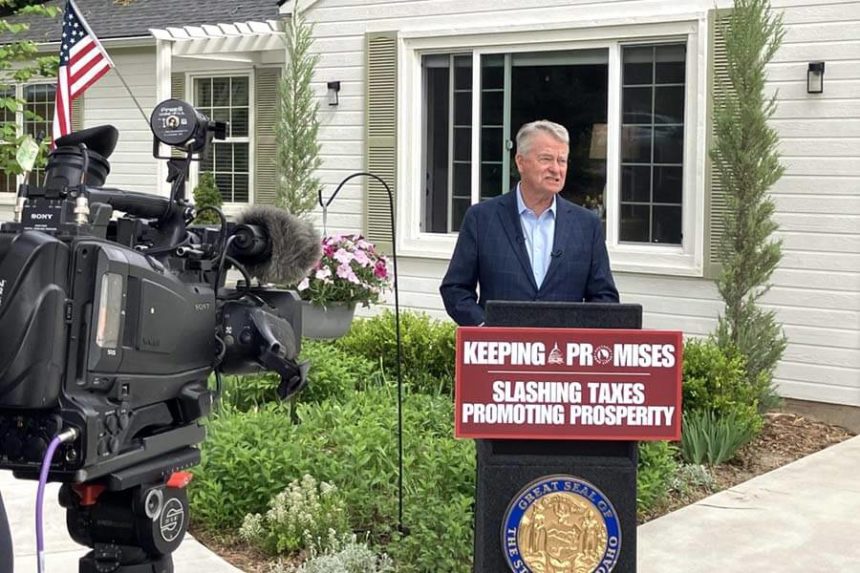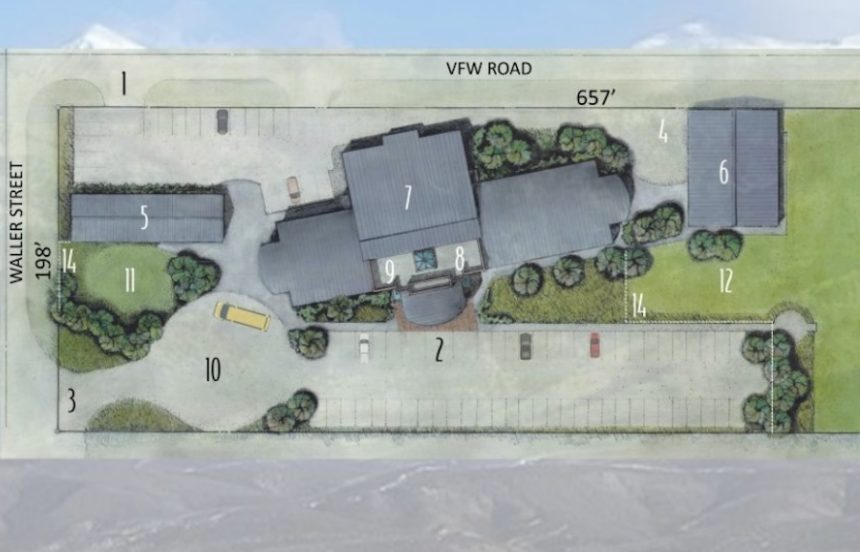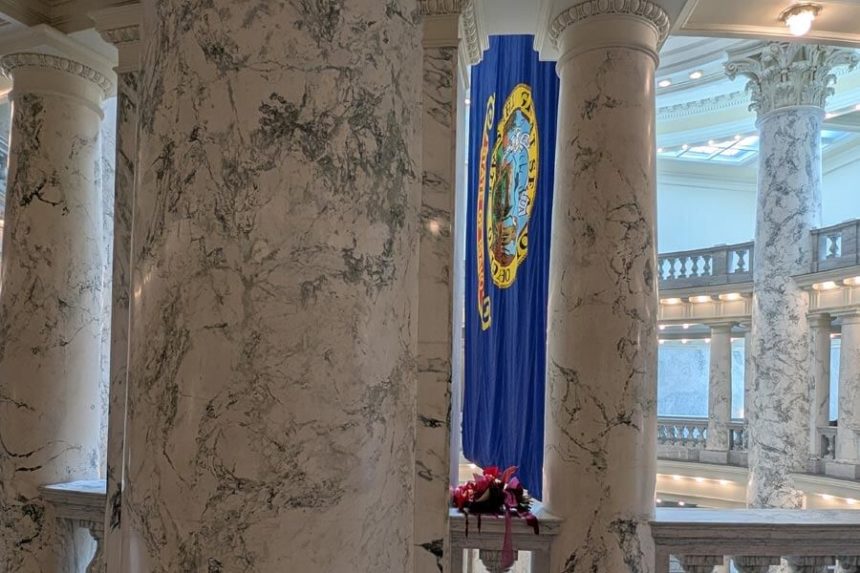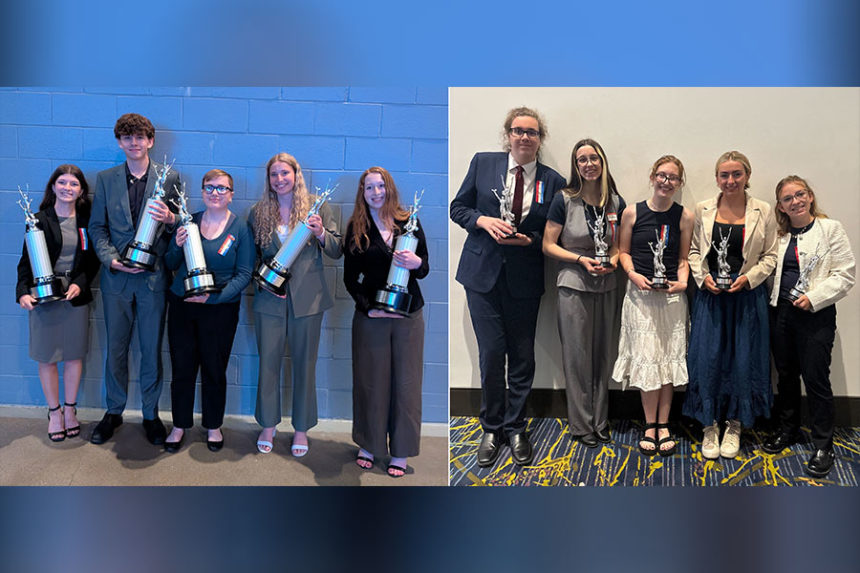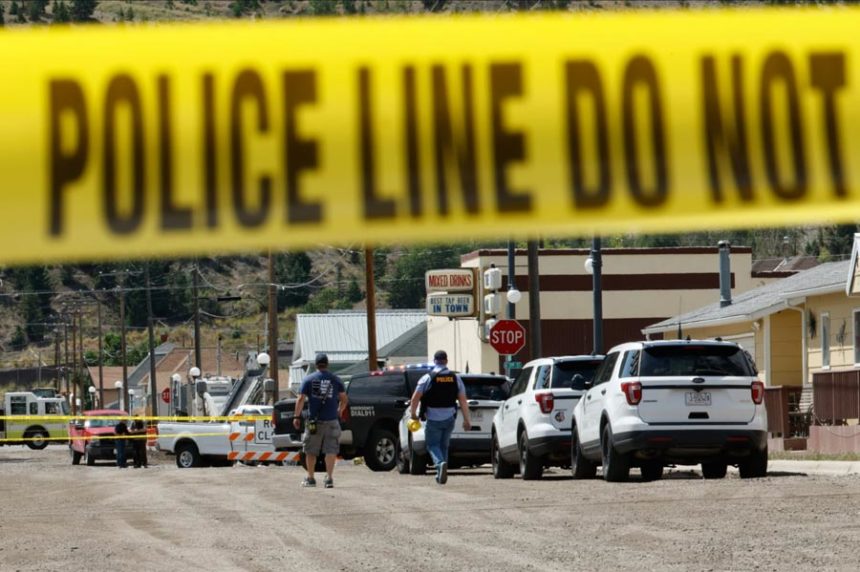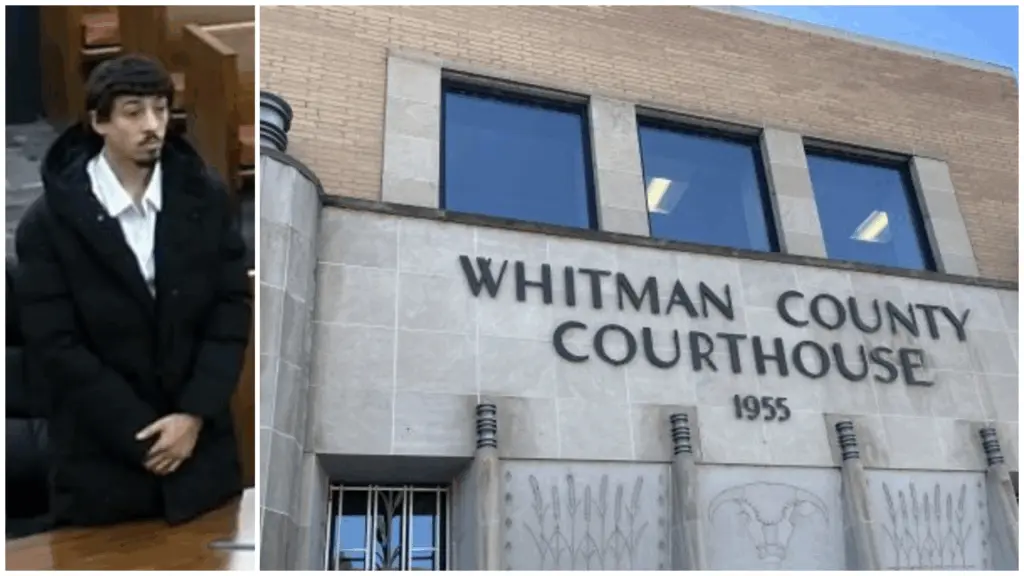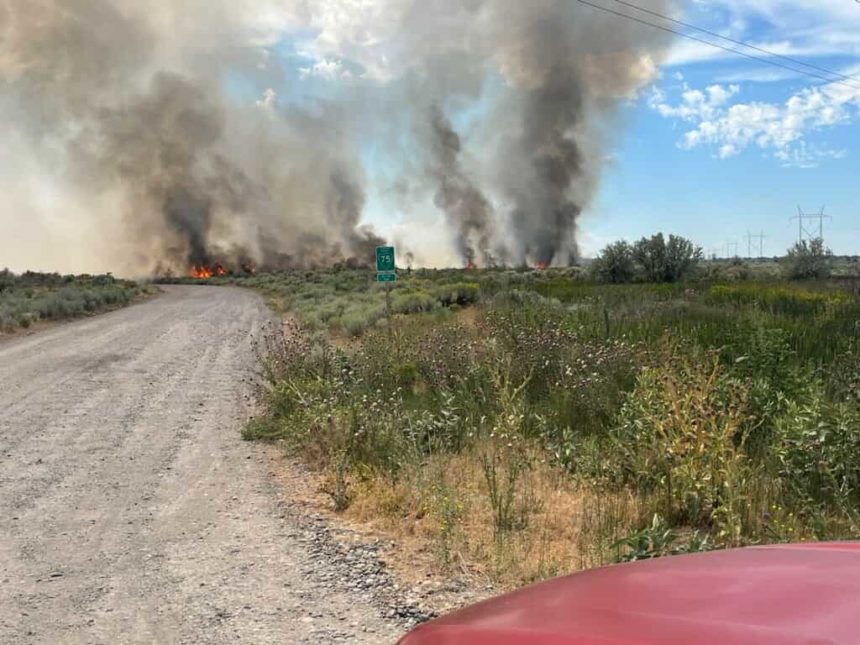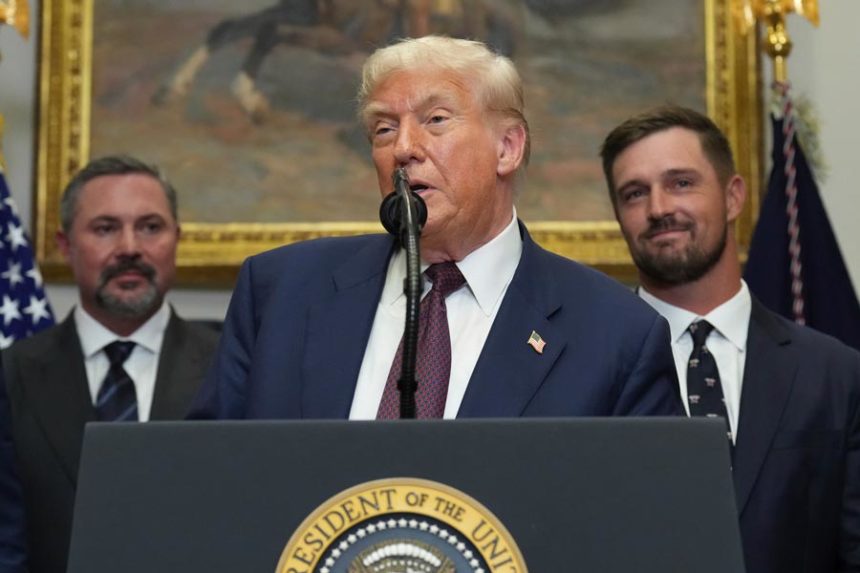BOISE (Idaho Ed News) Last month, the office of Governor Brad Little instructed state agency chiefs to prepare internal plans for midyear spending cuts and budget holdbacks. Little also restricted requests for budgets.
The two orders are issued as significant tax cuts go into effect and state revenue falls short of expectations.
A memo detailing the governor’s expectations was delivered to agency directors on May 29 by Little’s Division of Financial Management (DFM), as agencies get ready to submit their budget requests for the upcoming legislative session.
This time of year, DFM releases similar advisory memos. DFM administrator Lori Wolff stated in the most recent document, which Idaho Education News was able to get through a public records request, “But the state is facing a different scenario than we have seen in the past several years.”
While lawmakers implemented $453 million in tax cuts this year, the Idaho Capital Sun reported last week that state tax collection is $141.5 million less than anticipated. According to Wolff’s memo, this implies that the state will have lower revenue than anticipated in fiscal year 2027 and subsequent years.
Budgets that use funds from the state general fund will only be used for maintenance, Wolff informed agency leaders. Before submitting new spending proposals that involve federal or allocated monies, directors must obtain preapproval from the governor’s office. Additionally, she instructed directors to internally plan for budget holdbacks of 2%, 4%, or 6% while we continue to monitor national economic developments.
Wolff stated, “We must submit a balanced budget, even though we recognize that there are still many initiatives and challenges that impact your agency and operations. Idaho’s current revenue projections only allow for slight growth in appropriations for FY 2027.”
It’s too soon to predict how the budgetary constraints would affect funding for public education. However, colleges and institutions, the State Board of Education, and the Idaho Department of Education will need to find ways to cut spending by up to 6%.
State Superintendent Debbie Critchfield stated on Monday that whether tax receipts are higher or lower than anticipated, fluctuations in state revenue always have an effect on education spending.
“We are currently discussing the budget and looking at all kinds of scenarios,” she stated.
Wolff attempted to allay worries in a message to EdNews on Tuesday. Idaho’s economy is doing well, as seen by the state’s continued revenue growth from year to year. A $400 million buffer was left in the current year’s budget by lawmakers and Little. According to Wolff, they also allocated 22% of general fund receipts to rainy-day funds.
Nevertheless, as the fiscal year draws to a conclusion, Governor Little is planning for a variety of situations as a prudent steward of taxpayer funds. We are pleased with the health of our economy and the state budget, even though we are still keeping a careful eye on revenue.
Budget schedule
Agency directors have until August 29 to submit their budget requests to the governor’s office.
These consist of supplemental spending requests for fiscal year 2026 and spending requests for fiscal year 2027.
- Fiscal year 2026 runs from July 1 to June 30, 2026. The Legislature set these budgets during the 2025 session.
- Fiscal year 2027 runs from July 1, 2026, to June 30, 2027. The Legislature will set these budgets during the 2026 session.
The governor will submit his budget proposals to lawmakers in January, and Little’s staff will review agency requests in the months preceding the upcoming session.
Why is state revenue lagging?
Wolff mentioned two factors in her memo: tax cuts and lagging sales tax revenue as the rationale for the conservative budget guidance.
According to a Capital Sun story last week, state tax collections fell $55 million short of the Legislature’s estimate in April and $98 million short in May.
As of June, the final month of the fiscal year 2025, state revenue was $141.5 million less than what the Legislature had anticipated. Due to the present deficit, the state’s FY 2025 final balance would be $278.2 million instead of $420 million.
Wolff informed agency leaders that our income expectations for the years had been lowered since sales tax revenue in Idaho is growing more slowly. This will directly affect how agencies plan their budgets for the 2026 parliamentary session.
She added that Little and the Legislature reduced taxes by $453 million this year. She noted that although the economy would eventually increase as a result of this unprecedented tax cut, the state will ultimately get less money than anticipated.
These tax relief bills were approved by lawmakers and signed by Little:
-
House Bill 40
cut income taxes by
$253 million
by reducing the individual and corporate income tax rate from 5.695% to 5.3%, expanding exemptions for military pensions and eliminating capital gains taxes on gold bullion. -
House Bill 93
created a
$50 million
refundable tax credit program covering private school and home-school expenses. -
House Bill 231
increased the grocery tax credit to $155 per person, altogether providing
$50 million
in sales tax relief. -
House Bill 304
added
$100 million
to property tax relief funds that benefit homeowners and help school districts pay down bonds and levies.
Little had suggested $100 million and $50 million for private school choice at the beginning of this year’s legislative session, but these cuts were more than three times that amount. Little has already boasted about the tax cuts in appearances after the session, despite his worries regarding the magnitude of the tax relief offered by the Republican leadership of the Legislature.
What does the budget guidance mean for public education?
The possibility of setbacks in the upcoming months was not discussed by the governor’s office on Tuesday. However, Wolff stated that the governor’s top objectives will continue to be teacher compensation and public education.
Planning for holdbacks enables agencies to examine priorities and operations internally and make sure that key operations are prioritized, according to Wolff’s memo. It also helps us be ready for unforeseen circumstances.
The state government is required under the Idaho Constitution to keep its budget balanced. According to state law, if budgeted expenses in a particular year surpass revenue, the governor may revoke spending authorization.
During the COVID-19 pandemic in 2020, Little last ordered budget holdbacks, reducing public school expenditure by 5%. The majority of the reduction were made to salaries and discretionary spending. Prior to that, in 2010, after the Great Recession, former Governor C.L. Butch Otter ordered holdbacks.
According to Critchfield, as districts and charter schools prepare their 2025–2026 budgets this month, local education administrators are closely monitoring state finances. Since lawmakers and the Education Department mandated minimum compensation increases, several districts are already experiencing budgetary pressures this year.
“We are looking at ways to ease those pressures without new or ongoing dollars,” Critchfield said, adding that “school operations costs and special education costs won’t be going down in the future.”
Because of the maintenance budget restrictions, agencies are essentially limited to requesting funds for bills that they must pay in order to pay staff, fulfill contractual responsibilities, and keep the lights on.
Estimates of these budgets for the majority of agencies were distributed by DFM. For example, the Office of the State Board of Education may request up to $47.3 million, whereas colleges and universities are only allowed to spend $398.1 million. The list of estimations does not include IDE.
The memo states that a maintenance budget consists of:
- A 1% placeholder for state employee raises.
- An 18% increase in health insurance costs.
- Inflationary adjustments that are contractually obligated.
- Replacement item costs, calculated using a three-year average.
- Non-discretionary changes to population forecast adjustments.
According to Wolff, an agency must meet with the governor’s office to discuss its need for inclusion before requesting a line-item improvement from federal or specialized financial sources. Furthermore, FY 26 additional spending proposals have to be reserved for extreme circumstances.
Wolff stated that DFM will subsequently evaluate whether revenue estimates justify state employee hikes, including for K–12 teachers. Agencies should refrain from submitting line-item requests for additional personnel funds unless there has been a change in the state’s employee increase structure or employee compensation.
To read Wolff’s whole memo, click here. Additionally, go here to view the estimated maintenance expenditure.
Originally published on June 17, 2025, on IdahoEdNews.org
